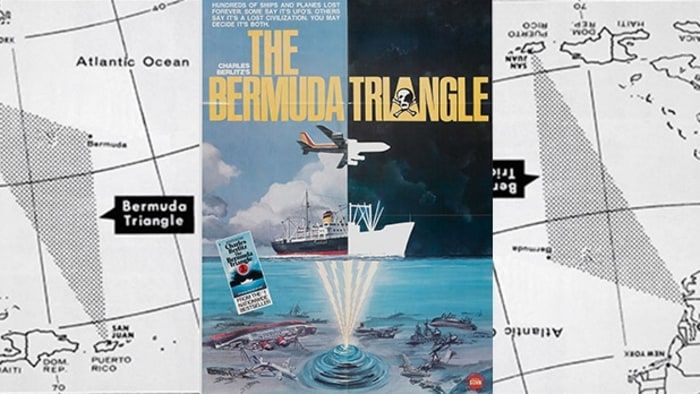The Bermuda Triangle, Finally Explained by Science?
It's been gobbling up ships, downing planes, and stoking legends of lost adventurers for centuries, but a group of European scientists say they may finally know the secret behind the so-called "Bermuda Triangle": methane explosions.
The Bermuda Triangle traditionally extends from Bermuda to Miami and Puerto Rico, but the answers to its purported mysteries could lie further afield in the Barents Sea off the coast of natural gas-rich Norway. That's where scientists with the Arctic University of Norway recently discovered giant craters on the seabed that could mark spots where massive bubbles of methane exploded.
Details of the discovery are expected to be released next month at an annual meeting of the European Geosciences Union, but an early look in the U.K.'s Sunday Times suggests that these craters, which are up to a half-mile wide and 150 feet deep, were caused by deposits of oil and gas buried deep in the seafloor sediments that accumulated to a point where they burst through into the water above.
RELATED: A Mysterious Death at the South Pole
"Multiple giant craters exist on the seafloor in an area in the west-central Barents Sea... and are probably a cause of enormous blowouts of gas," researchers from the Arctic University of Norway told the Times.
So what does that have to do with the Bermuda Triangle? Scientists think there is a possibility that such bubbles of gas could threaten ships and may explain an abnormal number of disappearances in the western part of the North Atlantic Ocean. Essentially, explosions like the ones they've discovered in the Barents Sea would send up a huge amount of water, potentially sucking up any vessels that happen to be in the wrong place at the wrong time.
The theory that enormous blowouts of methane gas can sink ships isn't entirely new. The proposal from Norwegian scientists seems to add credence to an idea first floated in a 2003 study published in the American Journal of Physics, which found that loose methane bubbles could indeed sink a ship. Researchers from Monash University, in Australia, built a model ship and released a large bubble underneath it to see if the vessel would lose its buoyancy. It did, but only when it was on the edge or in the trough of the bubble.
Whether this theory merits further study within the North Atlantic depends a great deal on whether or not you believe that the Bermuda Triangle exists as a phenomenon, which many scientists do not.
Mentions of strange activities in the region date all the way back to Christopher Columbus, who recorded bizarre compass bearings during his 1492 voyage through the present-day Bahamas. The phrase "Bermuda Triangle" didn't exist until author Vincent Gaddis penned a sensational 1964 cover article on the region's "supernatural forces" for the pulp magazine Argosy. Gaddis went on to mythicize the unsolved mysteries we now associate with the region, many of which modern-day historians argue were the result of poor weather and human error in what is, after all, one of the world's busiest shipping lanes.
The U.S. Board on Geographic Names doesn't list the Bermuda Triangle as an official name, nor does the U.S. Coast Guard recognize its existence.
"In a review of many aircraft and vessel losses in the area over the years, there has been nothing discovered that would indicate that casualties were the result of anything other than physical causes," the service states on its website, adding, "no extraordinary factors have ever been identified."
Insurance market Lloyd's of London similarly determined that, proportionally, no more ships have sunk in the Bermuda Triangle than any other parts of the ocean. Skeptics of the latest findings argue that there is no proof that gas explosions are common — let alone exist — in the region. Bill Dillon, a geologist with the U.S. Geological Survey, noted in a recent Q&A article on the Bermuda Triangle that there have been no large releases of gas hydrates in the region for the past 15,000 years.
"The Bermuda Triangle," he argues "is a fairy tale."
